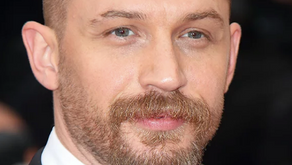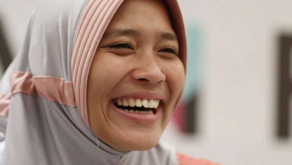Remembering Martha Gellhorn
- realshepower

- Aug 4, 2020
- 5 min read
Updated: Aug 22, 2020
Gradually I came to realize that people will more readily swallow lies than truth as if the taste of lies was homey, appetizing: a habit. - Martha Gellhorn

Martha Ellis Gellhorn was one of the most inspirational women figures of the 20th century who served her career as a war journalist. She is known to offer insight into all major war scenarios that have encompassed the length of her career spanning 60 successful years. She is also alternatively known for her marriage to the great American novelist Ernest Hemingway, making her his third wife. Her life was led by several remarkable events as well as achievements which made her one of the most inspirational journalist figures in several documented TV programs and books. What really made Gellhorn the firebrand that she is regarded today are her single-handed achievements even before she met Hemingway and her refusal to be considered less relevant than her husband. Though her job as a war correspondent was surely worth-mentioning, critics and intellectuals feel that her books like “The Weather in Africa” nail her place as an outstanding author who deserves mention.
Childhood and Early Life
Martha was born to gynecologist George Gellhorn and suffragist Edna FischelGellhorn on the 8th of November 1908 and was largely a part of a protestant family. She hailed from a family that hailed academics very highly which meant her brother Walter was a law professor at Columbia University and her younger oncologist brother Alfred had served his term as the dean of the University of Pennsylvania School of Medicine. From a young age, Gellhorn was fired by a spirit to champion for the causes of the lesser privileged, which led to even participate at the “The Golden Lane” rally at the mere age to eight, to talk about women’s right to vote. Gellhorn graduated from John Burroughs School and went on to pursue her dream of becoming a journalist after completing her education at Bryn Mawr College. Her writing got official recognition when her published articles came out in The New Republic. To keep her writing career rolling, she moved to France for two years and started working at the United Press Bureau situated in Paris.
Martha gradually got swept into the pacifist movement and in those years of following varied stories related to the movement and its developments that she developed a friendship with Eleanor Roosevelt. It is through her acquaintance that Martha was asked to visit the White House where she had spent man an evening helping the first lady pen her thoughts in the column titled “My Day” in Women’s Home Companion. This friendship really proved vital to her future experiences that shaped as a feisty spirit as shortly President Roosevelt invited her over to act as a field investigator in the Federal Emergency Relief Administration that was working towards ending the Great Depression.
Career
Gellhorn pursued her interest in journalism with an avid interest in the broiling problems that plagued the society. After starting her journey as a foreign correspondent in 1930, Martha took her fling with the French Press on to a more serious level when in 1932 she was hired by Harry Hopkins to help out Eleanor Roosevelt in the White House. In no time, Martha was traveling extensively and even worked with a photographer named Dorothea Lange to report about the lives of the homeless and starving during the Great Depression. What came out from that experience was a pure gem as she got exposure to several topics that women were barred to discuss in the early 1930s. The prolific research work she carried out during that phase helped her pen down a book titled The Trouble I’ve Seen. The book got published in 1936 which was a collection of short stories.
Right about the time that she met Ernest Hemingway in 1936, Martha was hired to work as a reporter for Collier’s Weekly and she was needed to cover the Spanish War in detail. What made the period significant was not just her association with Hemingway but her reporting of the rise of Adolf Hitler. She was in Czechoslovakia a few months prior to the Munich Agreement in 1938. This was followed by the outbreak of the Second World War when Martha actively started reporting events of the war and updates regarding the casualties from Hong Kong, Finland, Singapore, Burma, and England.
She was the only woman journalist to land at Normandy in 1944 during D-Day and was among the first journalists who reported about the liberation of the Dacahau Concentration camps. War had surely become a passion for Martha. After the World War was over, Martha spent the 1960s and 70s largely covering the Vietnam war. In the 1990s, due to her age and ill-health, Martha was unable to cover the Balkan conflicts. However, during the concluding days of her career in 1995, she did travel to Brazil to report about the widespread poverty in the region. In a lifetime spanning 40 glorious years, Martha has changed her home 19 times.

Personal Life and Legacy
One of the significant moments of her life was her meeting, Earnest Hemingway. They dated for a few years before getting married in 1940. However, her professional commitments characterized by long frequent periods of absence caused a rift in their marriage. While covering the Spanish wars, Martha traveled with Hemingway and the duo spent their first Christmas together. Her long periods of absence drew a wrench into their marriage and Hemingway even once wrote to her “Are you a war correspondent, or wife in my bed?” Following their struggles and mutual issues, Gellhorn even took a perilous voyage back home to a war-torn England to meet Hemingway where she decided to put an end to their marriage. Moreover, Martha resented the fact that her professional achievements in several cases were undermined and she was beginning to be known as Hemingway’s third wife. Even though her achievements and published works far preceded her involvement in his life, the press however seemed to not get over the fact. Martha has an affair with James M. Gavin a US Paratrooper during her marriage years with Hemingway. After their divorce, Martha has liaisons with several other prominent men before getting married to T Matthews, the then editor of Times magazine. The couple got divorced in 1963 and Gellhorn moved to Kenya and later to Devauden where the kindness of the Welsh people really touched her. During the later years of her life, Martha returned to London as her health wouldn’t permit her schedules.
Major Works
Martha has several books and war accounts published in her name, namely The Face of War (1959), The Lowest Trees Have Tops (1967), Travels with Myself and Another (1978), and several other collections of journalism during a more peaceful period.
Trivia
A lot of people consider Gellhorn to be a better and more accomplished writer than Hemingway for novels like “The Weather in Africa”.
Martha’s father was a highly progressive man and pulled her out of a convent school when he realized that they were teaching about human anatomy by covering body parts.

And though various organizations in America and England collected money and sent food parcels to these refugees, nothing was ever received by the Spanish.
- Martha Gellhorn

About the Author Poonam Chatterjee is a 26-year-old budding author, pet lover, and foodie. From a tender age of ten, she found her calling in the written word and since then, has been scribbling away her unconventional ideas, sometimes in the last pages of notebooks and sometimes on online blogs. Writing gives her happiness like no other thing.

























Comments